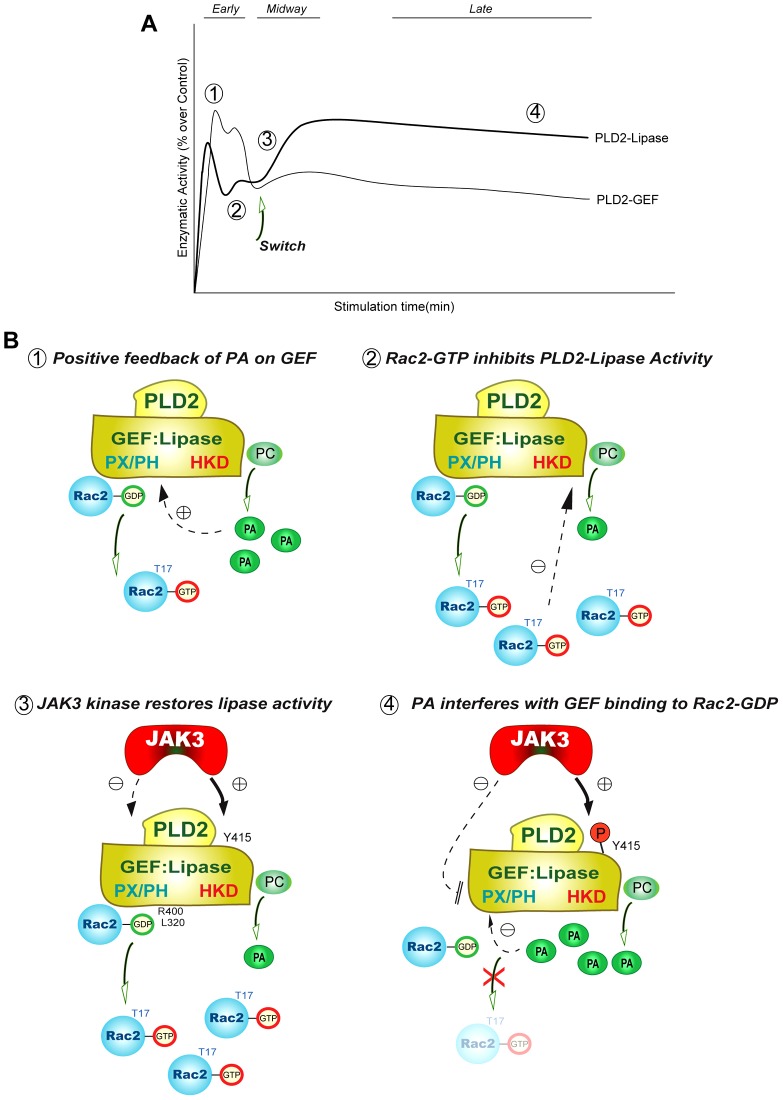Fig. 8.
Model for the proposed regulatory mechanism for dual (GEF and lipase) PLD2 activity. The inter-regulation occurs as the product of one reaction acting upon the alternate enzymatic activity (i.e. PA acting on GEF-PLD2 or Rac2-GTP acting on lipase-PLD2). (A) Re-plotting of Fig. 6A,B showing the complex dynamics of lipase and GEF activities as a function of time. The numbers in the graph represent the steps as outlined in the following panel. The arrow indicates the time when a switch between GEF activity and lipase activity takes place, thanks to the intervention of JAK3. (B) The proposed model is well explained in four points for the lipase–GEF inter-regulation. (1) At early times (∼5 min) of cell stimulation both PA and Rac2-GTP are produced to begin chemotaxis. (2) As time progresses (∼10 min), accumulation of Rac2-GTP (due to GEF activity) negatively feeds back on PLD2-lipase activity. (3) JAK3 tyrosine kinase restores lipase activity while inhibiting GEF activity. (4) Upon cell stimulation at >30 min, lipase predominates and GEF is further inhibited. Eventually at 60 min chemotaxis plateaus and both of the activities slow down.

